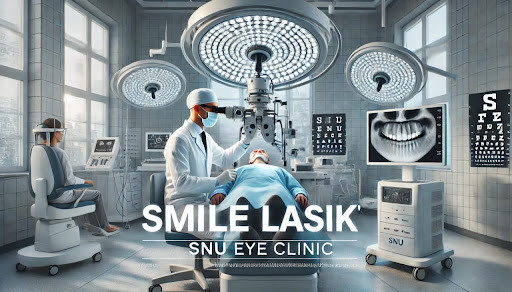In the realm of laser eye surgery, LASIK tends to steal the spotlight. However, PRK (Photorefractive Keratectomy) is a how bad does your eyesight have to be for lasik highly effective and well-established alternative that offers excellent vision correction—especially for those who may not qualify for LASIK. Whether due to thin corneas, active lifestyles, or specific medical conditions, many patients find PRK to be the safer and more suitable option.
This article explores what PRK surgery is, how it compares to LASIK, its benefits, risks, recovery process, and who makes the best candidates for this time-tested procedure.

What Is PRK Eye Surgery?
PRK, short for Photorefractive Keratectomy, is a type of refractive laser eye surgery that corrects common vision problems like:
- Myopia (nearsightedness)
- Hyperopia (farsightedness)
- Astigmatism (irregular curvature of the eye)
The goal of PRK is the same as LASIK: to reshape the cornea so that light entering the eye is properly focused onto the retina, resulting in clearer vision. The key difference lies in how the procedure is performed.
Unlike LASIK, PRK does not involve creating a corneal flap. Instead, the surgeon removes the thin outer layer of the cornea (the epithelium), then uses an excimer laser to reshape the underlying tissue. The epithelium regenerates naturally over several days.
Who Is a Good Candidate for PRK?
PRK is often recommended for patients who:
- Have thin or irregular corneas (making LASIK risky)
- Engage in contact sports or high-impact activities (where a LASIK flap could dislodge)
- Have dry eyes, as PRK generally causes less dry eye syndrome
- Were previously disqualified from LASIK due to corneal thickness or other factors
An eye surgeon will perform a comprehensive eye exam, including corneal mapping and measurements, to determine if PRK is the right choice.
Benefits of PRK
PRK offers many of the same advantages as LASIK, along with some unique benefits that make it a preferred option for certain patients.
1. No Flap = No Flap Complications
Because PRK doesn’t involve creating a flap in the cornea, there’s no risk of flap-related complications like dislocation or wrinkling. This makes PRK especially attractive for military personnel, athletes, and others in high-risk environments.
2. Proven Safety and Effectiveness
PRK has been performed since the 1980s and was the first type of laser eye surgery approved by the FDA. It has a long track record of safety and successful outcomes, with most patients achieving 20/25 vision or better.
3. Suitable for More Patients
People with thin corneas, large pupils, or corneal surface irregularities—all of which might disqualify them from LASIK—can often safely undergo PRK.
4. Reduced Risk of Dry Eyes
PRK may be less likely to cause or worsen dry eyes because it affects fewer corneal nerves than LASIK does. This makes it a safer option for those who already suffer from dryness or use contact lenses heavily.
The PRK Procedure: What to Expect
PRK is typically done in an outpatient setting and takes about 10–15 minutes per eye. Here’s how the process works:
- Preparation: Your eye is numbed with anesthetic drops. A device is used to keep your eyelid open.
- Epithelium Removal: The surgeon gently removes the thin outer layer of the cornea.
- Laser Reshaping: An excimer laser reshapes the cornea to correct your vision.
- Bandage Lens Placement: A soft contact lens is placed over the eye to protect it while the epithelium heals.
You’ll go home the same day and will need someone to drive you.
Recovery After PRK
PRK recovery is longer and more involved than LASIK recovery, but most patients find the results well worth the wait.
Timeline:
- Days 1–3: Expect some discomfort, light sensitivity, and blurry vision. Medicated eye drops and oral pain relievers are used to manage symptoms.
- Days 4–7: The surface of your eye begins to heal. The bandage lens is usually removed around day 4 or 5.
- Weeks 2–4: Vision continues to improve. Fluctuations are normal as your eyes stabilize.
- 1–3 Months: Most patients reach their final, stable visual outcome within this period.
You’ll attend several follow-up appointments to monitor healing and vision progress.
Risks and Side Effects
While PRK is generally safe, potential risks and side effects include:
- Discomfort and pain during the first few days of healing
- Blurry or hazy vision while the epithelium regenerates
- Dry eyes, though usually less severe than with LASIK
- Light sensitivity or glare, especially in the early stages
- Corneal haze, a clouding effect that is rare with modern techniques but treatable if it occurs
Following your surgeon’s post-operative care instructions and using prescribed medications significantly reduces these risks.
PRK vs. LASIK: Which Is Better?
Both PRK and LASIK offer similar long-term visual outcomes. Choosing between the two depends on individual factors:
| Factor | PRK | LASIK |
| Corneal thickness | Suitable for thin corneas | Requires thicker corneas |
| Recovery time | Longer (weeks to months) | Shorter (1–2 days) |
| Discomfort | Moderate post-op discomfort | Minimal discomfort |
| Flap-related complications | None | Possible |
| Sports/military use | Ideal | Flap risk in contact sports |
Consulting with an experienced eye surgeon is essential to determine the most appropriate option for your eyes and lifestyle.
Conclusion
PRK is a safe, effective, and time-tested alternative to LASIK, especially for those with thinner corneas, high-impact lifestyles, or dry eye concerns. Though the recovery is slower, the long-term results are just as impressive—offering clear, glasses-free vision for years to come.
If you’re exploring laser eye surgery, don’t overlook PRK. With the guidance of a skilled ophthalmologist, you can decide if this proven procedure is the right path to clearer, more independent vision.